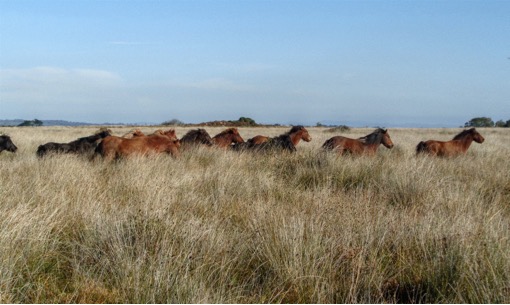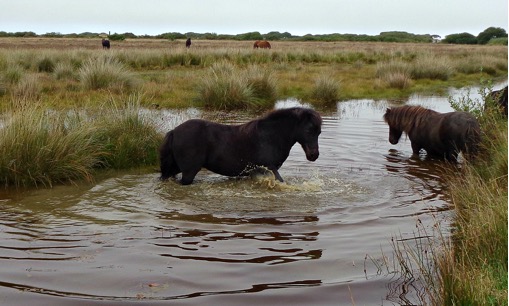What is it? Benefits and Breeds

What is it?
Managing interesting landscapes in a low intensive way to encourage the wildlife and plants that these areas support.
• Conservation grazing is livestock grazing that promotes biodiversity.
• Many nature reserves are now managed using grazing animals.
• Due to their typically hardy and thrifty nature, our rare and native breeds are generally considered to be the best animals for this job.
The British landscape has evolved hand-in-hand with ‘keystone’ species such as native ponies.
The increase of human influence saw the gradual displacement and substitution of these wild ponies, with domestic animals such as sheep, cattle and pigs. As herd size increased and management changed, this led to problems of overgrazing and compaction of grassland and upland habitats, and a decrease in woodland biodiversity, culminating in an overall loss of habitat and species diversity.
Benefits
Conservation grazing seeks to bring balance back to those habitats which have become impoverished. Through the careful selection and management of semi-feral ponies, natural regeneration is encouraged by virtue of their particular grazing traits. Native ponies are discerning diners, feeding on coarse grass, rushes and smaller fine-leaved sweet vegetation but leaving the more wildlife-friendly plants and flowers. While mowing machines are useful in other ways it is not easy to achieve this kind of discrimination with them. The ponies can also graze round difficult tussocky patches which cause mowers to get stuck.

Balanced grazing, selecting specific native breed ponies in the right herd numbers at the right time, reduces the prevalence of vigorous plants that out compete more ‘fragile’ species, creates microclimates and areas of bare ground through trampling and disturbance from lying down, and diversity through selective grazing methods. Dung is also a valuable resource for certain invertebrates.
Conservation grazing on the Lizard NNR’s and surrounding areas by semi-feral native ponies has seen an increase in diversity of plant species, including some of the rarest plants in the UK, such as the Cornish Heath and Fragrant Orchid. It has also had a knock-on-effect for animals such as bees, bats, birds and butterflies, including the Red Data List species, the Marsh Fritillary.
Breeds
The breed of ponies we employ for conservation grazing on the Lizard NNR’s are The Shetland Pony, and The Exmoor Pony.
These native pony breeds are favoured due to their hardiness and are nutritionally adapted to graze on unimproved, species rich grasslands, such as heath land and coastal grassland, which is seen as their main advantage. These areas are rich in purple moor-grass, course grass and gorse, which the grazing ponies will ‘browse’ preventing these fast growing species from overcrowding the land. The ponies tend to favour grasses to eat and generally leave flower-heads alone. They will graze the vegetation to a very low level, allowing smaller plant species an opportunity to flourish. To prevent problems such as over-trampling, poaching and unpalatable forage, our semi-feral native pony herds are moved seasonally.
For further information on the year in the life of our conservation ponies, please go to Diary of a Pony-patter.
References:
The Scrub Management Handbook; English Nature
Inside Ecology
publications.naturalengland.org.uk/file/612038
Published: Mar 2019
Author: Debbie Sea-Kay
